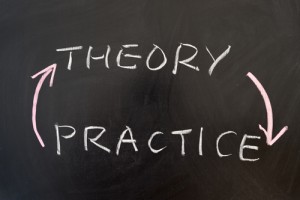
This report has drawn evidence from eight case studies working in health care commissioning. It looks at the different ways they are set up, and how they access information to conduct their business effectively. The authors have demonstrated how commissioners get the information that they need, and how they put it into practice. They found that there was a variation in the application of evidence-based practice, but that only one of the clinical commissioning groups (CCGs) “was explicitly grounded in evidence-based practice“.
Each of the eight case studies is unique as they have developed their own structure, based on a combination of three commissioning models:
- Clinical commissioning
- Integrated health and social care
- Commercial provider

Each CCG has its own unique structure based on three commissioning models
Introduction to commissioning
The report is divided in to 10 chapters, including one on the methodology and the final one on discussion and conclusions. The chapters in-between have something for everyone. Chapter 3 is a clear introduction to commissioning; ideal for staff who are new to the area, as it describes the history, and explains what commissioners do. The chapter is illustrated with frameworks and models of commissioning, and identifies the challenges that commissioners face.
Chapter 4 goes in to greater detail about the different models of commissioning, interspersing anecdotes among the evidence, so that the document is not only informing you about the research, but also giving you practical experience and examples from the case sites. Table 6 is a comparison of the commissioning models and describes the knowledge needs for each one.

Evidence and experience provide theoretical and practical examples of commissioning
Knowledge transfer
The next chapter is about how “health-care commissioners access research evidence and other sources of knowledge to aid their commissioning decisions“, and describes the different information sources that they use. However, while universities are listed as an information source, medical libraries are not, so this could be something or the information sector to explore, particularly as the information sources that are listed are missing some other important sources, such as Health Business Elite, HMIC, and NHS Networks.
The chapter on knowledge transformation is very relevant to commissioners, because it describes how commissioners apply information from other agencies for their local needs. It goes in to great detail about the five different ways by which commissioners acquire knowledge and information:
- Existing relationships
- Embedded staff from other organisations
- Government policy and directives
- Building on good practice from elsewhere
- Tools produced by external contractors for gathering customer-related data
This is really useful, because, for each of these methods, you are presented with evidence and examples about how to make the most of the people and organisations you work with, to improve the services you deliver.

Commissioners apply five methods to gather knowledge and information
Commentary
This is an in-depth report with 130 pages, but it is full of relevant information for providers and commissioners, and it demonstrates the benefits of co-production and partnership-working. Usefully, at the start of the document there is a plain English summary, and a lengthier scientific summary, and at the end of each chapter, there are a set of key points. What might be useful is to first read the summaries and the key points, to see which aspects of the document will be most useful to you. Presumably people are at different stages of knowledge acquisition and transformation, and so some aspects of this report will be more pertinent than others. One point to note is that, while most of the document is relevant to commissioners and providers, Chapter 5, is also particularly useful for librarians and information professionals, because, as highlighted earlier, out of the 8 case studies, only one CCG was explicitly evidence-based. This chapter can help you plan your service to meet the needs of commissioners and their stakeholders.
Link
Wye L, Brangan E, Cameron A, Gabbay J, Klein J, Pope C. Knowledge exchange in health-care commissioning: case studies of the use of commercial, not-for-profit and public sector agencies. Health Services and Delivery Research. 2015, 3(19)


Skills development and knowledge transfer are benefits of working with external providers, says study https://t.co/JwyoRo5bFi via @sharethis
Report describes methods used by commissioners to transfer knowledge into practice http://t.co/xVLD0g6ASy
Skills development and knowledge transfer are benefits of working with external providers, reports study http://t.co/xtNxT27tQ0
Practical advice for knowledge transfer within clinical commissioning groups http://t.co/xVLD0g6ASy
Evidence and experience provide theoretical and practical examples of commissioning http://t.co/xVLD0g6ASy
Commissioners apply five methods to gather knowledge and information http://t.co/xVLD0g6ASy